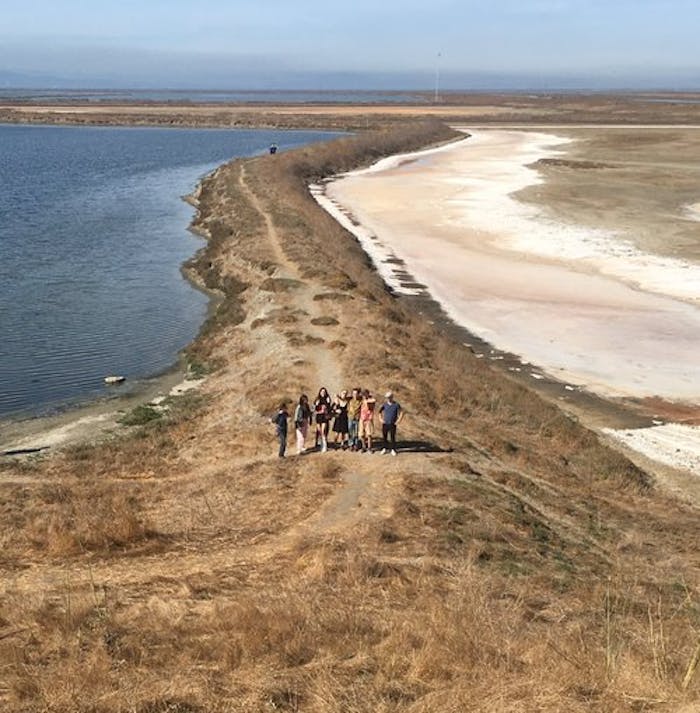UC Berkeley graduate students working with Professor Kristina Hill took on a "placekeeping" design exercise.
This was an intentional departure from traditional "placemaking" - since typical urban placemaking can feel imposed and accelerate displacement in communities of color. Continuing the All Bay Collective partnership, this course was co taught by Professor Hill as well as Jamie Phillips, Nico Wright and Chris Guillard from CMG landscape Architecture.
The students asked whether a residential street right-of-way can do important work for climate and economic adaptation - by adding street trees, Accessory Dwelling Units (ADUs), community agriculture, bike lending libraries - and using canals as a new form of green infrastructure, to draw the high water table down as sea levels rise. The students made maps of street trees and parcel ownership, groundwater and contaminated soils, and shared those with the East Oakland Neighborhood Initiative (EONI), funded by TCC grant to educate and organize about climate change in East Oakland.
They continued working with their All Bay Collective community partners, Marquita Price and Colin Cook-Miller from EONI, and brought in Alameda County's Rohin Saleh, Oakland's new Chief Resilience Officer, Alex McBride, and Oakland planner Dylan Hamilton.
Source: Resilient by Design | Bay Area Challenge

 03 Good Health and Well-being
03 Good Health and Well-being
 08 Decent Work and Economic Growth
08 Decent Work and Economic Growth
 09 Industry, Innovation and Infrastructure
09 Industry, Innovation and Infrastructure
 11 Sustainable Cities and Communities
11 Sustainable Cities and Communities
 13 Climate Action
13 Climate Action